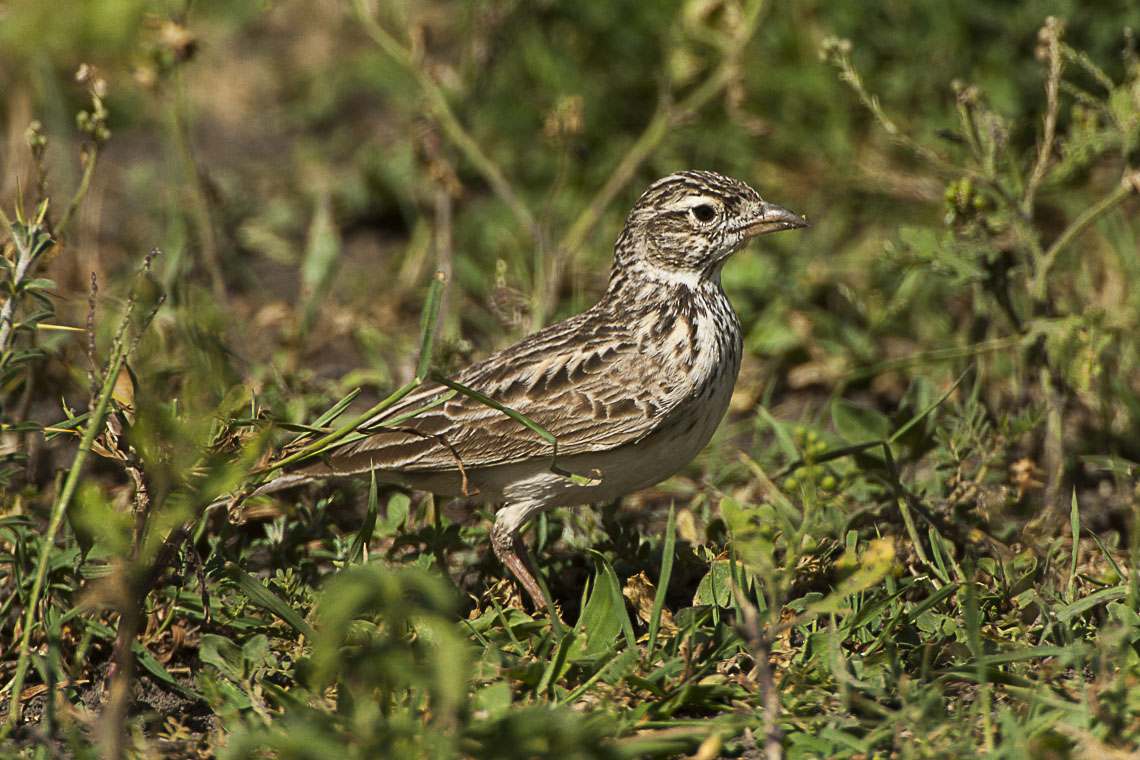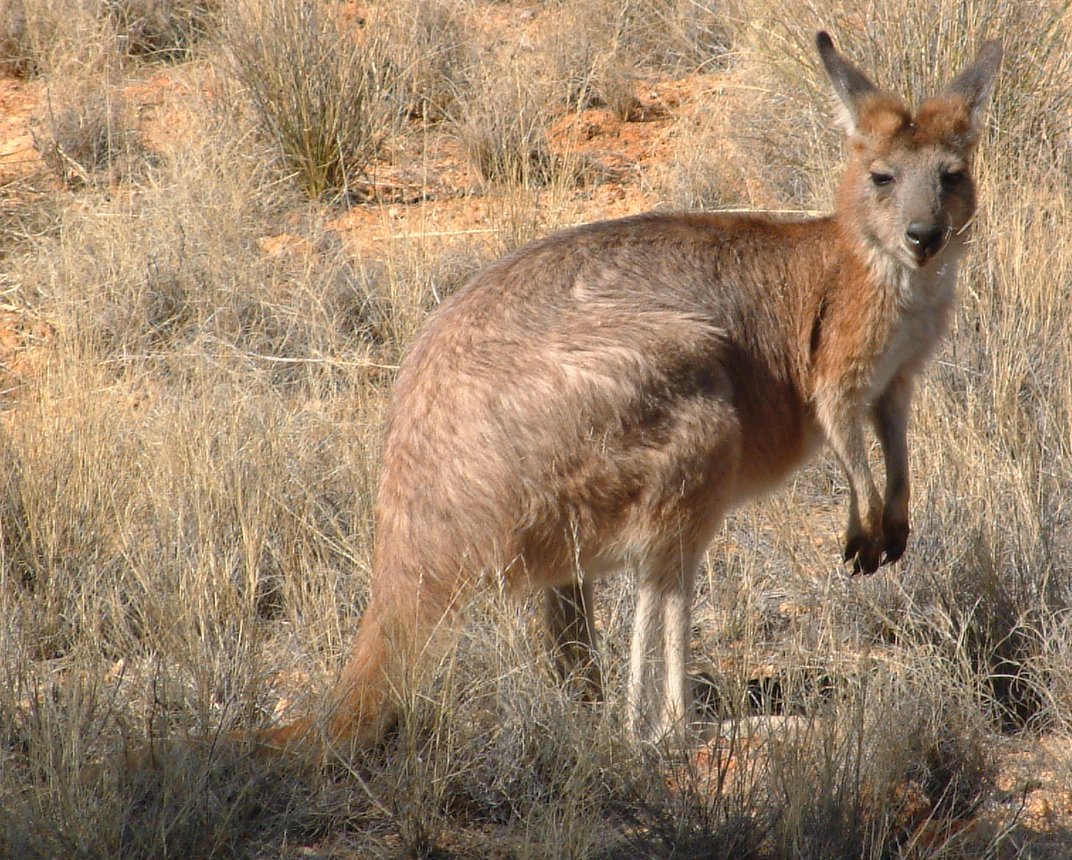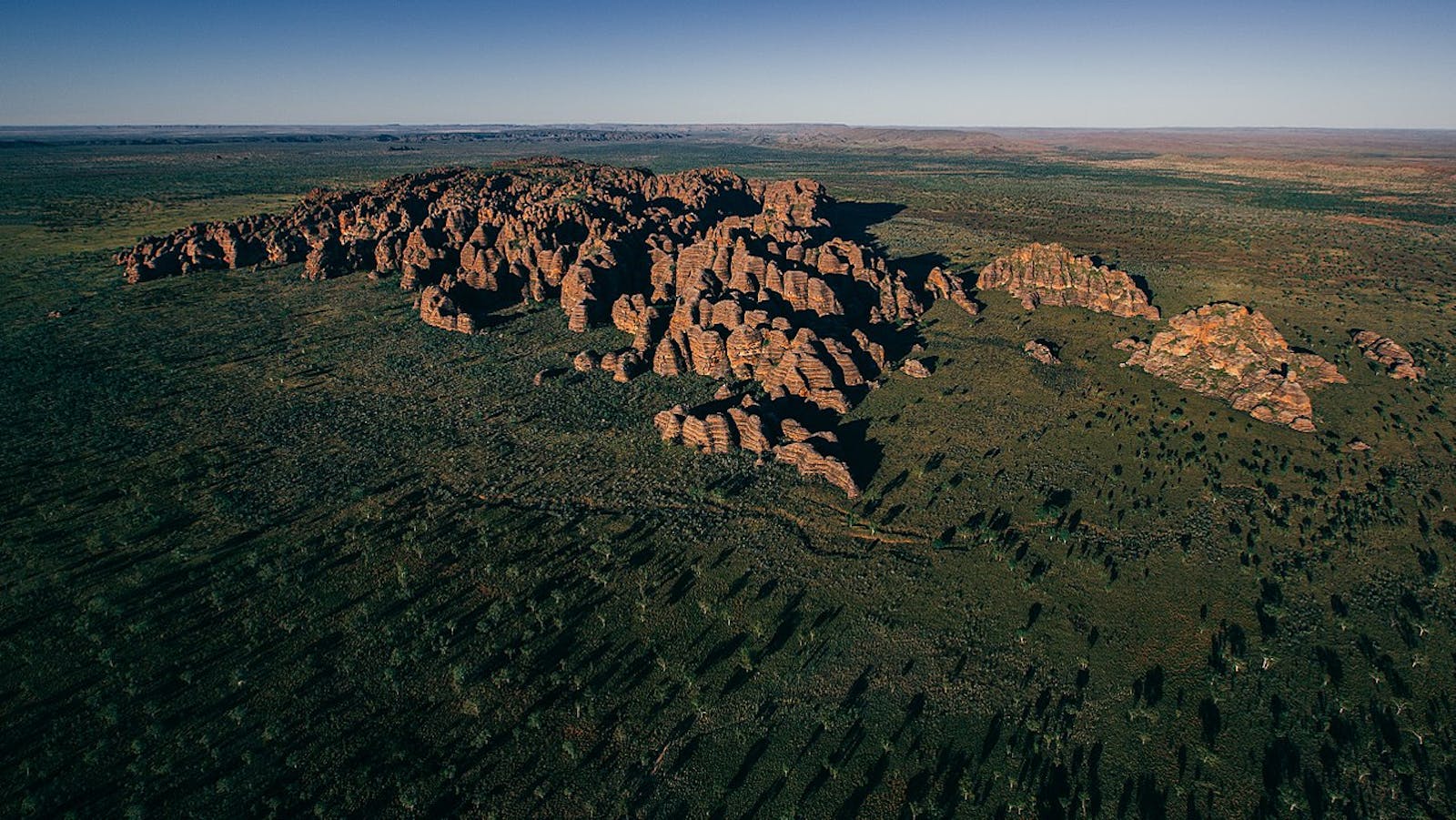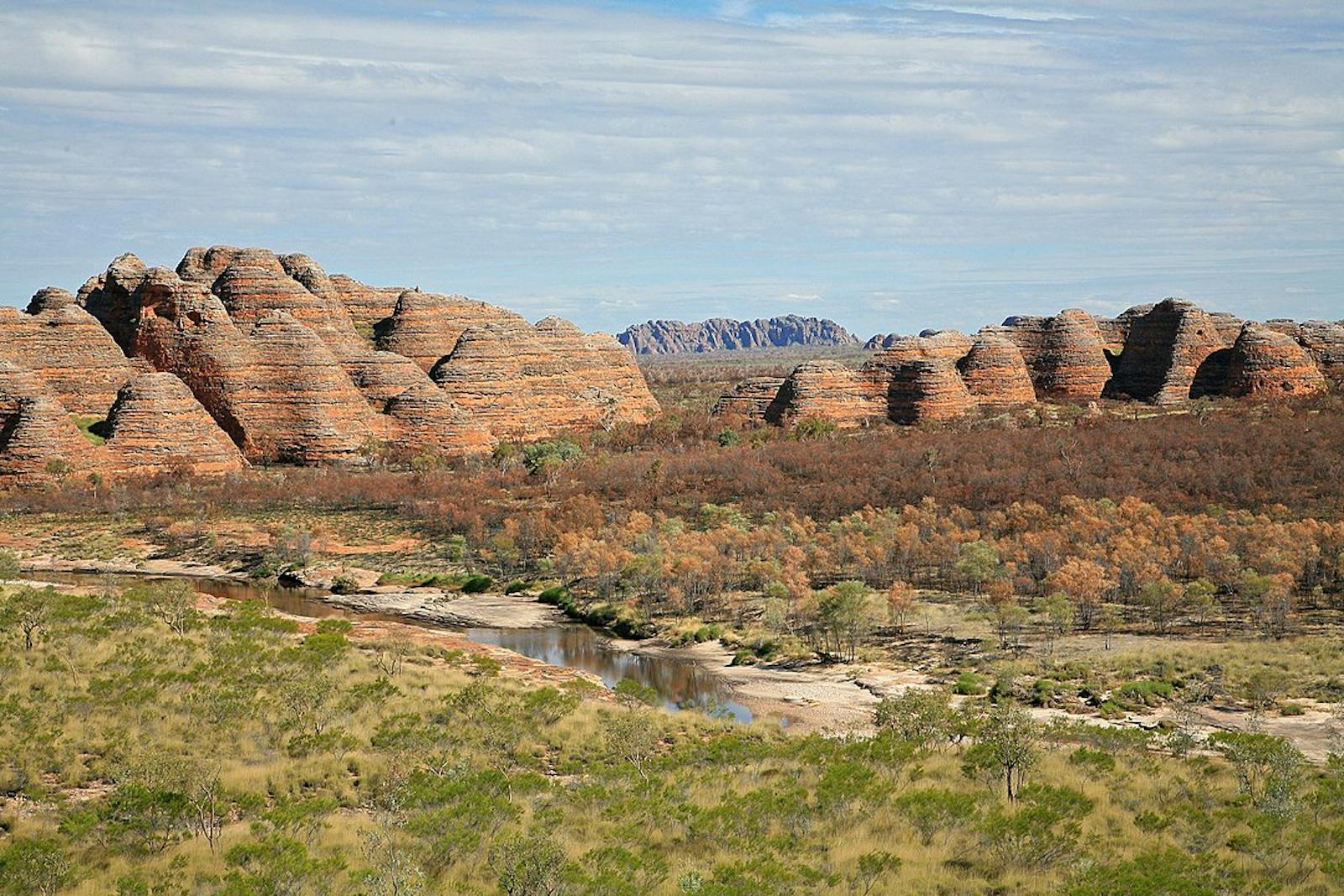Victoria Plains Tropical Savanna
The ecoregion’s land area is provided in units of 1,000 hectares. The conservation target is the Global Safety Net (GSN1) area for the given ecoregion. The protection level indicates the percentage of the GSN goal that is currently protected on a scale of 0-10. N/A means data is not available at this time.
Bioregion: North Australian Tropical Savannas (AU8)
Realm: Australasia
Ecoregion Size (1000 ha):
22,523
Ecoregion ID:
189
Conservation Target:
97%
Protection Level:
1
States: Australia
The Victoria Plains are a transition zone between the monsoonal rain environments of northern Australia and the dry arid interior of the continent. In the west are clay and red loam soils with sandstone outcrops like the Bungle Bungle Range. In the east is the largely flat Sturt Plateau with red-sandy loam soils and occasional mesas and lateritic outcrops. The short wet season drives a boom and bust cycle of vegetation growth, supporting a diverse assemblage of seed-eating birds.
.jpg)
The flagship species of the Victoria Plains Tropical Savanna ecoregion is the Victoria River palm. Image credit: Creative Commons
Eucalypts or bloodwood eucalypt (Corymbia spp.) woodlands are the dominant vegetation type, with a tall grass understory dominated by species of Sorghum. Lancewood (Acacia shirleyi) and bullwaddy (Macropteranthes keckwickii) are mostly found in the east. The unusual lancewood-bullwaddy vegetation in this ecoregion is the most extensive in Australia. Here, one can find river red gum (Eucalyptus camaldulensis), Terminalia platyphylla, and species of figs (Ficus). Small sandstone outcrops and sandsheets support eucalypt open woodlands with a hummock grass (Triodia spp.) understory or heathlands dominated by Grevillea and Acacia species. Sheltered gorges, such as in the spectacular sandstone Bungle Bungles Range, provide habitat for relict wetter climate species, such as the fern Taenitis pinnata, resurrection grass (Micraira spp.), and the tall Victoria River palm, Livistona victoriae.

Singing bushlark. Image credit: Francesco Verones, Creative Commons
Abundant spectacled hare-wallaby (Lagorchestes conspicillatus) in the lancewood-bullwaddy thickets, and the northern nailtail wallaby (Onychogalea unguifera) in grasslands and open woodlands occur in the region. There has been a decline or disappearance of mammals including bilby (Macrotis lagotis VU), northern quoll (Dasyurus hallucatus) and golden bandicoot (Isoodon auratus). Major population of the threatened purple-crowned fairy-wren (Malurus coronatus) dominates the riparian vegetation along the Victoria river, and the endangered gouldian finch (Erythrura gouldiae) grasslands and woodlands. Reptiles, such as Suta ordensis and Varanus kingorum, are endemic, and a small distribution of the agamid lizard Cryptagama aurita is concentrated in this region. The skink Lerista bunglebunglensis is restricted to the Bungle Bungle Range. A few burrowing frogs are largely restricted to the red earths, most notably Cyclorana cryptotis and C. maculosus. Rainforest patches provide mesic refugial habitats for endemic Camaenid land snails and earthworms. Limestone and sandstone caves in Gregory National Park likely harbor an endemic invertebrate fauna.

Eastern wallaroo. Image credit: Michael Barritt, Creative Commons
Natural communities are degraded by widespread loss and degradation of water sources and riparian vegetation, largely from domestic and feral livestock. The small, frequent fire regime practiced by Aboriginal peoples has shifted to fire suppression eventually resulting in larger, intense wildfires that damages natural vegetationl. Introduced rubber vine (Crytostegia grandiflora) and prickly acacia (Acacia nilotica) overtake native habitats in places. Over 90% of the region is used for pasture. Heavy grazing creates deep gullies and fills rivers with sediment. Dense populations of feral stock impact on vegetation, soils, and water sources is a major threat.

Red-backed fairy wren. Image credit: Greg Miles, Creative Commons
Reserves of the ecoregion include the Purnululu National Park and several indigenous reserves. Lake Gregory is listed as a DIWA Wetland of National significance. Lake Argyle with river red gum (Eucalyptus camaldulensis) woodland is important for birds. The key conservation actions for the next decade are to: 1) adequate invasive species control in and around mesic habitats refugia of the Bungle Bungle Range; 2) strengthen wetland management at Lake Wilson, Gardiner Range, and Sturt Creek; and 3) support and expand land management programs such as the Victoria River District Conservation Association that employs Ngaliwurru Landcare and the Indigenous Pastoral Project.
Citation
BirdLife International (2020) Important Bird Areas factsheet: Gregory National Park. Downloaded from http://www.birdlife.org on 12/08/2020.
Russell-Smith, J. 1991. Classification, species richness, and environmental relations of monsoon rain forest in northern Australia. Journal of Vegetation Science 2:259-278.
Woinarski, J.C.Z., and A. Fisher. 1995a. Wildlife of Lancewood (Acacia shirleyi) thickets and woodlands in northern Australia: 1. Variation in vertebrate species composition across the environmental range occupied by lancewood vegetation in the Northern Territory. Wildlife Research 22:379-411.




